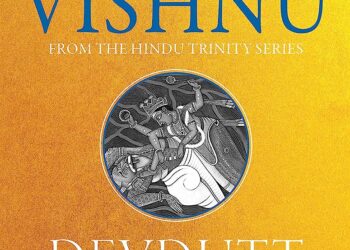What is Free verse Definition And Examples
Free verse is a form of poetry that does not adhere to traditional metrical or rhyming patterns. Unlike structured poetic forms such as sonnets or haikus, free verse offers poets the freedom to create their own rhythm, line breaks, and overall structure. It emerged as a reaction against the constraints of traditional poetic forms, allowing poets to express themselves in a more flexible and unconventional manner. In this essay, we will explore the characteristics, history, and significance of free verse in the realm of poetry.
Characteristics of Free Verse:
- Absence of Meter: Free verse does not adhere to a specific metrical pattern. Unlike traditional forms such as iambic pentameter or tetrameter, free verse gives poets the liberty to determine the rhythm and pace of their lines. This absence of strict meter allows for a more natural flow and the use of varied line lengths.
- Lack of Rhyme: Free verse often lacks end rhyme or strict rhyme schemes. What is Free verse Definition And Examples Poets are not bound by the need to find words that rhyme, freeing them to focus on other aspects of their poetry, such as imagery, language, and emotional impact. What is Free verse Definition And Examples However, poets may choose to include internal rhymes or occasional rhymes for added effect.
- Flexible Line Breaks: Free verse permits poets to break lines wherever they choose, rather than adhering to traditional end-stopped or enjambment patterns. What is Free verse Definition And Examples This flexibility in line breaks allows poets to emphasize certain words or phrases, create pauses or caesuras, and shape the overall rhythm and cadence of their poems.
- Varied Structures: Free verse allows for a wide range of structures and forms within individual poems. Poets can experiment with stanza lengths, line lengths, and the overall organization of their verses. Some free verse poems may consist of unbroken blocks of text, while others may utilize irregular or fragmented structures to enhance the meaning or tone of the poem.
- Focus on Imagery and Language: Without the constraints of meter and rhyme, free verse poets often place a strong emphasis on vivid imagery, evocative language, and the exploration of complex themes. The freedom provided by free verse allows poets to use language creatively and experiment with different stylistic devices, such as repetition, alliteration, and metaphor.
History and Development of Free Verse:
Free verse emerged as a significant poetic form in the late 19th and early 20th centuries, particularly with the advent of modernist poetry. What is Free verse Definition And Examples Influential poets such as Walt Whitman, Emily Dickinson, and T.S. Eliot played pivotal roles in popularizing and refining free verse as a legitimate form of expression.
Also Read-
- What is Foreshadowing Definition And Examples
- What is Flashback Definition And Examples
- What is Foil Definition And Examples
Walt Whitman is often considered the father of free verse. In his groundbreaking collection “Leaves of Grass,” published in 1855, Whitman introduced a new style of poetry characterized by long, sprawling lines, irregular line breaks, and a lyrical, conversational tone. What is Free verse Definition And Examples His poetry celebrated the individual, nature, and the diversity of American life, and his use of free verse reflected his belief in the freedom and democratic spirit of the American people.
Emily Dickinson, another influential poet of the 19th century, also experimented with free verse in her poems. What is Free verse Definition And Examples While she occasionally employed traditional forms, Dickinson frequently disregarded conventional rhyme and meter, opting for irregular line lengths and idiosyncratic punctuation. What is Free verse Definition And Examples Her unique use of free verse allowed her to explore complex emotional and existential themes in her concise and poignant poems.
In the early 20th century, the modernist movement brought further advancements to the development of free verse. What is Free verse Definition And Examples Poets like T.S. Eliot, Ezra Pound, and William Carlos Williams rejected the traditional conventions of poetry and sought new ways to express the fragmented and disillusioned realities of the modern world. What is Free verse Definition And Examples Their experimentation with free verse reflected the shifting cultural and artistic landscape of the time, challenging established norms and pushing the boundaries of poetic expression.
Significance of Free Verse:
Free verse has had a profound impact on the world of poetry, offering poets greater artistic freedom and opening up new avenues for self-expression. Its significance can be observed in several aspects:
- Liberation from Traditional Constraints: Free verse liberated poets from the constraints of strict metrical and rhyming patterns. What is Free verse Definition And Examples It allowed them to focus on exploring innovative ideas, emotions, and themes, unrestricted by the rigid structures of traditional poetry.
- Authenticity and Natural Expression: Free verse enables poets to write in a more natural and conversational manner, capturing the rhythms and cadences of everyday speech. What is Free verse Definition And Examples It allows for a more authentic and direct expression of emotions, thoughts, and experiences.
- Versatility and Adaptability: Free verse’s flexible structure and lack of formal rules make it adaptable to a wide range of subjects and styles. What is Free verse Definition And Examples It has been used to explore personal experiences, social issues, political commentary, and experimental approaches to language and form.
- Reflecting the Complexity of Modern Life: Free verse emerged alongside the rise of industrialization, urbanization, and the increasing complexities of modern life. What is Free verse Definition And Examples Its fragmentation, lack of structure, and diverse forms mirror the fragmented and diverse nature of modern existence, providing a suitable vehicle for expressing the complexities and contradictions of the modern world.
- Influence on Poetic Movements: Free verse has influenced numerous poetic movements and styles, including imagism, confessional poetry, and the Beat generation. What is Free verse Definition And Examples It has inspired poets to push boundaries, experiment with language and form, and challenge conventional notions of poetry.
Examples Of Free verse
- “Song of Myself” by Walt Whitman: I celebrate myself, and sing myself, And what I assume you shall assume, For every atom belonging to me as good belongs to you. I loafe and invite my soul, I lean and loafe at my ease…observing a spear of summer grass.
In this excerpt from “Song of Myself,” Whitman showcases the free verse style that he is known for. The poem does not follow a strict meter or rhyme scheme but instead allows the lines to flow naturally, emphasizing the celebration of the self and the connection to the world.
- “I heard a Fly buzz – when I died” by Emily Dickinson: I heard a Fly buzz – when I died – The Stillness in the Room Was like the Stillness in the Air – Between the Heaves of Storm –
This excerpt from Dickinson’s poem demonstrates her use of free verse. The lines have irregular lengths and do not follow a specific rhyme pattern. The lack of strict structure enhances the poem’s contemplative and introspective tone.
- “The Waste Land” by T.S. Eliot: April is the cruellest month, breeding Lilacs out of the dead land, mixing Memory and desire, stirring Dull roots with spring rain.
Eliot’s renowned poem “The Waste Land” is an example of free verse with its varying line lengths and absence of rhyme. The poem combines different voices, allusions, and fragmented images to capture the fragmented and disillusioned nature of the modern world.
Conclusion
Free verse is a form of poetry that offers poets the freedom to break away from traditional metrical and rhyming patterns. What is Free verse Definition And Examples It allows for flexible line breaks, absence of strict meter, and a focus on imagery, language, and natural expression. What is Free verse Definition And Examples Free verse emerged as a significant form of poetic expression in the late 19th and early 20th centuries, with influential poets such as Walt Whitman, Emily Dickinson, and T.S. Eliot playing pivotal roles in popularizing and refining the style. What is Free verse Definition And Examples Free verse has had a profound impact on the world of poetry, liberating poets from traditional constraints, enabling authentic expression, reflecting the complexity of modern life, and influencing various poetic movements.
FAQ.
Q. Is free verse considered easier to write than structured poetry?
Ans. Free verse does not adhere to the rigid rules of structured poetry, such as specific meter and rhyme schemes. While the absence of these constraints may provide more freedom, it also presents challenges. Writing compelling free verse requires a strong command of language, imagery, and rhythm, as well as a careful consideration of line breaks and overall structure. So, while it may be less restrictive in form, it still demands skill and creativity from the poet.
Q. Can free verse include rhyme and meter?
Ans. Although free verse is characterized by its lack of strict rhyme and meter, poets have the freedom to incorporate elements of rhyme and meter into their free verse poems if they choose. This can be done for emphasis, musicality, or to create specific effects within the poem. However, it is important to note that such elements are not obligatory in free verse and are used at the poet’s discretion.
Q. How do poets determine line breaks in free verse?
Ans. In free verse, poets have the liberty to determine line breaks based on their intended rhythm, emphasis, or overall aesthetic effect. Line breaks can be used to create pauses, enhance certain words or phrases, or guide the reader’s interpretation. Poets often rely on their ear for the natural flow of language or experiment with different line breaks to find the most effective arrangement for their poem.
Q. Can free verse convey specific themes or emotions effectively?
Ans. Yes, free verse is a versatile form that can effectively convey a wide range of themes, emotions, and experiences. Its flexibility allows poets to experiment with language, imagery, and structure to capture and express complex ideas and emotions. Free verse can evoke a sense of intimacy, spontaneity, and raw emotion, making it well-suited for exploring personal, social, and universal themes.
Q. Can free verse be used in other languages besides English?
Ans. Yes, free verse is not limited to the English language. It can be employed in various languages and cultural contexts. Just like in English, free verse in other languages allows poets to experiment with form, rhythm, and structure, offering them the freedom to express themselves authentically and creatively.
















